[one_half]
By Ian Kenney
Montana Marksman Rifle
Tactical is a term that seems to get attached to way too many products these days and truthfully it’s beginning to get a little tiresome. I find it refreshing then when a rifle like the MMR hits the market with all the right features one might find in a “tactical” rifle but with a slightly different approach. There isn’t an excessive amount of rail space, fancy camo finishes or a catchy name taken from ancient weaponry. The MMR stands for Montana Marksman Rifle, simple and to the point just like the rifle itself. Here’s a quick run down on the specs for this particular MMR:
Action: Montana Rifles M1999 action, controlled round feed, side bolt release, three-position safety.
Barrel: Montana Rifles Stainless Steel #6 contour, 1:10 twist
Caliber: .308 Winchester
Barrel Length: 22”
Threaded: 5/8 – 24 with Thread Protector
Trigger: Timney Model 70
Trigger Pull Weight: Approx. 2.5 pounds
Stock: Pendleton Composite Stocks, adjustable length of pull, adjustable cheek piece, three sling swivel studs, spider web painted finish, epoxy bedded.
Magazine Capacity: 5+1 with hinged floor plate.
Finish: All metal parts are painted in Cerakote Gray.
Weight: Approximately 13 lbs.
Looking at that list, this rifle has some pretty impressive specs that should appeal to a lot of shooters, both new and experienced alike. Some of the specs will vary depending on whether you chose a short- or long-action cartridge, but the rest should pretty much stay the same.
The Montana Rifles M1999 action is a controlled-round feed action, the basis of which has been around for a long time and is well known for ultra-reliable feeding from the magazine. This rifle was no exception, and it always fed smoothly and reliably from the internal box magazine. Montana Rifles also installed a Badger Ordnance bolt knob, a common bolt modification to help with rapid bolt manipulations for follow up shots. The barrels that are used on the MMR rifles are made by Montana Rifles using a button rifling process. A barrel is button rifled when a tungsten steel “button” is pulled through a barrel blank to literally press the lands and grooves into the barrel. Button rifling is a more economical method of rifling but still produces a barrel that will provide good accuracy and a long barrel life. All of the metal components on the MMR are coated in a gray Cerakote finish, arguably the finest firearms finish on the planet. I also liked that the gray finish contrasted nicely with the spider web finish on the stock; it was a nice break from the black-on-black scheme found on many rifles these days.
The scope that was provided on this rifle for testing was a Leupold VX-3L 3.5-10 with covered turrets and mounted with Leupold two-piece Standard base and rings. The reticle was a second focal plane Boone and Crockett reticle that is designed to be used in conjunction with Leupold’s Ballistic Aiming System for longer range hunting. The optics were clear, and overall I would say this would make for a fine hunting scope, but it wasn’t ideal for precision rifle shooting at distance. The lack of externally adjustable turrets meant that I only had the reticle to use to compensate for the trajectory of the round. In order to maximize the utility of the reticle, I had to use an alternate zero that gave me the most amount of elevation possible with the reticle. While this wasn’t conducive for shooting tiny groups, it served well enough to shoot some steel targets and punch paper.
Before I zeroed the rifle, I first had to map the Boone and Crockett reticle so that I knew the subtension of the reticle or the distance between different points on the reticle. This would help me create accurate hold-over points for shooting at long range when I combined it with the ballistic data for the ammunition I was using. Some manufacturers provide all of this information either on their website or by calling their technical service department but if all else fails you can simply measure the reticle with some simple tools. You will need access to a 100-yard range, a large sheet of paper or poster board, a marker and a tape measure. Make a large vertical line on the paper or poster board and then add horizontal marks every inch for the length of the paper. This in effect creates a reticle, so that when you look through the lens you see how many inches there are between the different points of the reticle and jot them down. This technique can be applied to not just BDC-type reticles like the Boone and Crockett but also simple Duplex reticles.
Since the Leupold VX-3L with the Boone and Crockett reticle was designed to use the Ballistic Aiming System, Leupold already has preset points where the reticle will be accurate for different types of ammunition. I decided to use the small triangle setting for my shooting because it gave me more available elevation than at high power but still enough magnification to accurately shoot at distance. After I had mapped the reticle and combined that with the information from Leupold I figured out that I would have a combined elevation of about 13 MOA if I zeroed at the bottom of the top stadia.
Using JBM ballistics, a free online ballistic calculator, I entered in the vital information needed for it to compute the trajectory of the ammunition I was going to use. This included the information from JBM’s extensive bullet library, the muzzle velocity, scope height, the zero range, and in what form I wanted the ballistic data (MOA, Mils, IPHY, etc.). Once JBM had computed the trajectory information it was easy to match where the ballistic data and the subtension data intersected. In this case, with the 100-yard zero at the bottom of the top stadia, the crosshairs represented 260 yards, then 335 yards, 430 yards, 480 yards, and then about 530 yards at the bottom stadia. Knowing what distances the stadia lines corresponded to would allow me to make an accurate hold-over once I started pushing the distances out farther and farther.
So with some of the details out of the way, let’s talk about how this rifle handles and shoots, since I’m sure that’s why most of you are reading this review anyway. Over the course of a few weekends, I was able to get to Peacemaker National Training Center and a private farm outside Seneca Rocks, West Virginia, to stretch this rifle’s legs a little to see how it performed. Since this rifle could be used for a variety of purposes, I tried to mix up the ammunition a little bit by including a couple different types of match and hunting ammunition. I used Hornady American Whitetail ammunition to get the gun sighted in initially and for some of the shorter range shooting portions. For accuracy testing and longer range shooting, I used Federal Gold Medal Match and UltraMax 168 BTHP ammunition as the distances stretched to just over 500 yards. Due to the time constraints, I didn’t have a chance to chronograph all of the ammunition through the rifle, unfortunately.
The Hornady American Whitetail ammunition performed surprisingly well in this rifle during initial zeroing and shooting out to 300 yards on PNTC’s Independence range. My first three shots impacted in a neat 1” group, which wasn’t too bad for relatively inexpensive hunting ammunition. I moved out to the 300-yard steel and didn’t have any issues hitting the 12” steel plates, which is easily the size of the lethal zone on most North American game. By the time I ran out of the Horandy ammunition, the paint on those steel targets was a little worse for wear and the rifle was really beginning to grow on me.
Back at 100 yards, I confirmed my zero with the Federal Gold Medal Match ammunition, since that’s what I would be using for the accuracy testing. Unfortunately this would also reveal my first real problem with the rifle. It started having some real trouble extracting the spent brass. Upon firing, the bolt was very difficult to pull back, and it took considerable force to actually extract the brass from the chamber. The brass showed no outwards signs of over pressure so it was a little disconcerting that the rifle had function issues with what is widely considered the most popular factory match ammunition on the market. Despite that, I was still able to shoot a couple of five-shot groups that were sub-MOA, which wasn’t bad for a shooting without a refined aiming point on 8X.
The next weekend I was on my way to Seneca Rocks, to a farm where the Allegheny Sniper Challenge is held, a multi-day precision rifle match that challenges shooters in nearly every way imaginable. I was shooting with my good friend Brock Markwell, whom I’ve known and shot with for quite a few years. In true ASC spirit, Mother Nature reared her head and blessed us with high winds that were blowing across the farm at a fairly consistent 30+ mph with gusts above 40 mph. At one point, a good heavy gust blew the Kestrel 4500NV right out of my hand while I was trying to get a wind reading. We decided to head down into the hollow, where the wind would be much, much calmer while still affording us the opportunity to shoot out to about 500 yards or more. The other nice thing about going down in the hollow is that many of the targets were relatively small and placed in amongst the trees, so getting a good shot was challenging, a perfect test for the MMR.
The first stop along the way was a spot where historically a stage called “Sgt. York” was shot from a large boulder; you had to hit five steel plates laid out from 260 to about 120 yards away. This is never as easy as it sounds, since you have to deal with a steep hillside and a slightly upward angle to the targets. It only took me a few shots to quickly realize that I was paying for the mistake of not checking the UltraMax ammunition, as it was impacting high over the target. A quick zero check on one of the steel targets confirmed that the zero was different and that I had to add about 50 yards to the drops that I figured for the Leupold Boone and Crockett reticle. After making a slight adjustment to true, up my drops in the reticle hits on steel came easily. Brock got behind the gun to send some rounds down range also and actually shot better than I did, nailing every target in quick succession. The familiar ergonomics of the grip and the adjustability of the stock actually made shooting off the rock pretty comfortable and the gun easy to handle. Brock even noted how comfortable the gun was to carry in the hand, balancing nicely just in front of the floor plate.
In field shooting, unlike on a flat range, it’s not uncommon that you just can’t get into a steady prone position in order to take a shot, and you have to use some sort of alternate support. This situation presented itself as we pulled up to another spot in the hollow that looked up on a small steel plate set in amongst the trees about 430 yards away. The angle was too steep, so I had to break out my shooting sticks in order to set up where I could see the target. Even though my first shot dropped just off the left edge of the target, my two follow-up shots nailed it one almost right on top of the other. I think the shape of the stock again helped me settle into a comfortable sitting position with the shooting sticks and stay on target. The Badger Ordnance bolt knob also made the manipulation of the bolt very fast for the follow up shots, something important in match stages where you have a time limit.
We actually headed up the road to the steel target that I had just shot, and I got to see just how small the target really was, probably only 5” wide and 7” tall. From here, we could go prone in the road and shoot back in the direction we had just come from at a pepper popper that was about 480 yards away. I didn’t have any problems hitting this target except when I decided to try and hit the head portion of the target. The last spot that we fired from for the day was on the way out of the hollow to a steel target that was at a pretty good upward angle on the side of the hill; the corrected distance was 530 yards. I had to break out the shooting sticks again, but all of my rounds landed in a nice cluster just a little low right on the target. By the end I was pretty happy. I’d also like to note that neither Brock nor I had any troubles chambering or ejecting the brass from the rifle when using the UltraMax ammunition.
The issue with the Federal match ammunition nagged at me, so I made one last trip with the MMR to shoot a few groups and see if perhaps it wasn’t a fluke. In short, the rifle didn’t like Federal Gold Medal Match, as each and every round was difficult to extract from the chamber. The gun shot fairly well, but difficulties I was having were starting to draw attention, so I wrapped up my session early. To be fair, I tried the same ammunition in a Remington 700 AAC-SD and the ammunition performed just fine. It was brought up that the MMR performed the way it did because the chamber was cut on the tight side of the SAAMI spec for accuracy combined with a dirty chamber. I’ve been shooting tactical rifles for almost twelve years, and if a tactical precision rifle can’t shoot Federal Gold Medal Match in a dirty chamber, that’s something that needs to be reexamined.
Now I’ve been at this game for long enough to know that there isn’t one product or company in this industry that does things perfectly every time. Precision rifle shooters can be a nitpicky bunch, especially when spending thousands of dollars on rifles and equipment, so we tend to go over every detail with a fine-tooth comb. The rifle is advertised as being epoxy-bedded, so when I disassembled the rifle to get some pictures I was really quite surprised by what I found. There were a lot of imperfections, “tool” marks and uneven lines that I just didn’t expect to see in a rifle that’s in this price range. According to Montana Rifles, the rifles are actually bedded using the same Kevlar resin used in the construction of the stocks. Any tool marks are from clearances the gunsmith felt needed to be made. But while I was going through the bedding job, there was a considerable indentation caused by one of the screws on the Timney trigger. It appears that that area of the stock wasn’t relieved enough to clear this screw, and it pressed into the stock when everything was torqued down.
My other critiques of this rifle were minor, but again it kind of goes back to precision rifle shooters being a nitpicky bunch. I think that a rifle in this price range and geared towards the tactical rifle market should come with a 20 MOA Picatinny base as standard. This would add value to the rifle and open up a huge range of mounting options for optics and accessories that are popular for hunting and long-range shooting. I also wasn’t a huge fan of the standard slotted action screws that Montana Rifles used. While it does add a bit of a traditional look to the rifle, there’s a risk of damaging the slot if the right sized driver isn’t used. Typically a hex screw would be more appropriate for a rifle such as this to mitigate the potential issue of stripping out the head under torque.
I think with revisions to some aspects of the rifle, the Montana Marksman Rifle can be a serious competitor in the tactical precision rifle market. It could be another viable option to some of the other tactical precision rifles on the market such as the FN SPR A3G and Kimber Tactical Rifles. One area where I think Montana Rifles has the upper hand over some other manufacturers is offering the MMR in popular long range calibers in configurations that make sense. Currently the MMR is slated to come in .260 Remington, 6.5-284, 300 WSM and .300 WM, in addition to the .308 Winchester. Those calibers would certainly make the rifles appealing to those who want a “one stop shop” when choosing a rifle for long-range hunting or competition shooting. The base cost for the rifle is $2,990, which actually isn’t too bad considering that it comes with a quality aftermarket trigger, a fully adjustable stock and a tough-as-nails finish.
[/one_half]
[one_half_last]

The Timney Model 70 trigger used on the MMR. Timney makes excellent, field ready triggers that are easily adjustable by the shooter or their gunsmith.
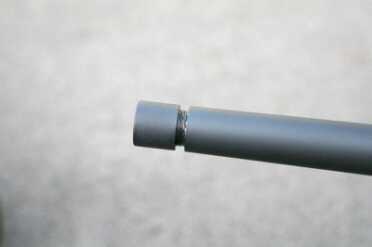
The muzzle is threaded for the use of a muzzle brake or sound suppressor. This type of modification adds value as in years past a shooter would have to send the rifle to a gunsmith.

The Leupold VX-3L was designed with a bevel in the objective to allow to mounted lower to the bore while still giving it a large objective for low light performance.
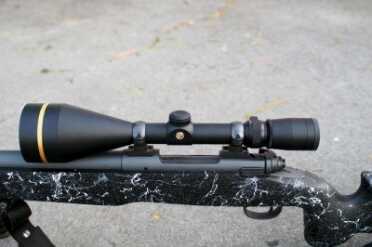
A 20 MOA picatinny base would have been a welcomed addition to this rifle to aid in setting up different scopes.

Like some other bolts the MMR’s bolt is easy to disassemble for cleaning. The enlarge bolt knob provides plenty of grip to run the bolt fast.
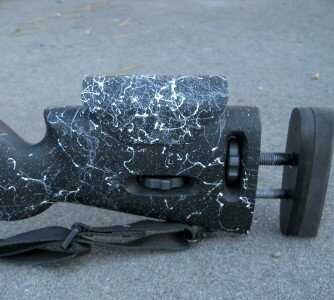
This is the MMR’s stock adjusted fully out to show the full range of adjustment available to fit a shooter to the rifle.
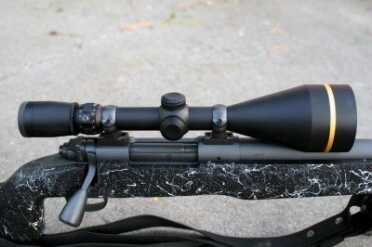
One downside to the two piece rings and bases was that it did not allow the scope to move forward or aft to get the eye relief perfect.

The trigger guard provides generous space to engage the trigger, even with a gloved hand. The Timney trigger felt great and was a good addition to the rifle.
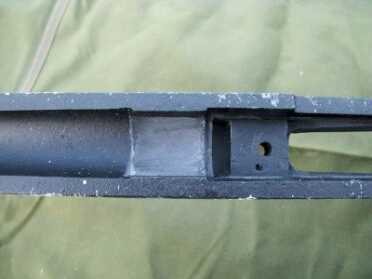
It was a little disappointing that the finish on the bedding job wasn’t a little better. The uneven lines at the barrel pad and voids were a little unsightly.
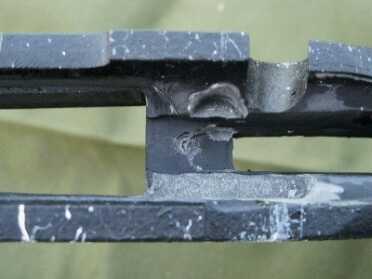
This view shows some of the relief cuts done for the action. While functional, they were again unsightly for a rifle in this price range.
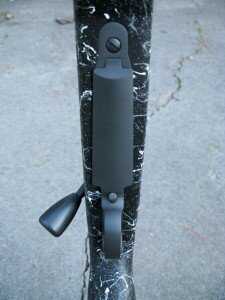
This is a shot of the Winchester style floor plate and the slotted action screws. On a tactical rifle I would prefer hex head action screws but these give it a traditional look.
[/one_half_last]

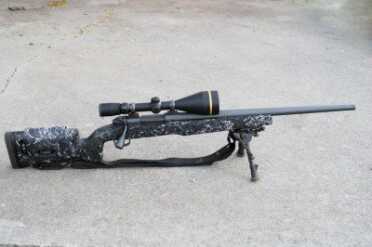

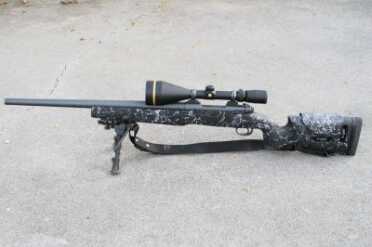


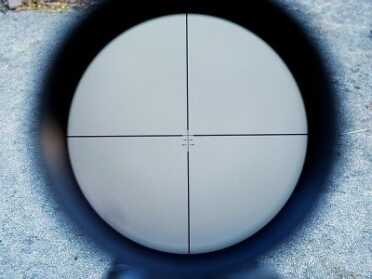
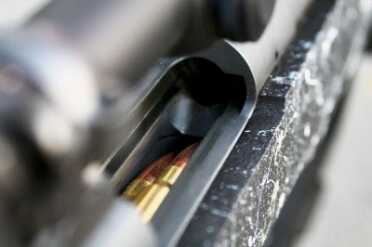
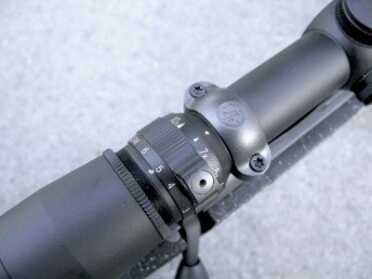
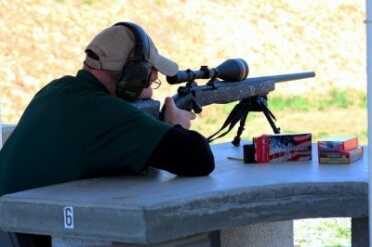

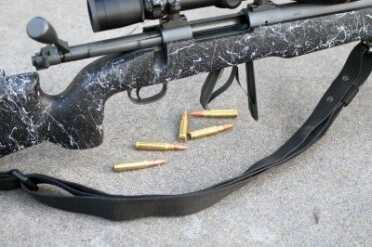
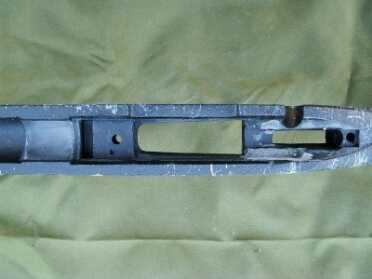

Thank you so much for the review of this gun. I was contemplating the MMR even with the price range exceeding my budget, however having read this review I am disappointed with the quality of the MMR at this price range and will refrain from a purchase at this time. I am hoping that MRC will improve their quality control in the future, giving me an opportunity to one day purchase the MMR.
I enjoyed your review of this rifle. It is completely new to me. Love the stock. Hate the scope.
I’m assuming “button rifling process” is not nearly the same as a (CHF) hammer forged barrel?
What twist is the barrel?
Do they break the barrel in too?
Thanks
“The base cost for the rifle is $2,990, which actually isn’t too bad considering that it comes with a quality aftermarket trigger, a fully adjustable stock and a tough-as-nails finish.”
I beg to differ. For a total of about $1500 (scope not included), including accurizing work, my Sendero II in 300 RUM topped with a Vortex Viper PST 6-24X50 prints a sub 1/2 MOA 5 shot group and has an aluminum bedded stock and shoots pretty much anything I want to out of it. For about $1000 my son’s Rem 700 SPS .308 Win with the HS Precision Pro Varminter stock upgrade and just a bit of trigger tweaking prints less than 1 MOA with a cheap scope shooting any rounds we’ve put through it so far.
Seems to me whomever it was that sent this rifle to you outfitted as it was wasn’t concerned enough about any reviews written to have paid attention to detail. For my $2990 I want every penny’s worth of value out of a “precision rifle”. If that’s how Montana Rifles sends it’s review guns out I question their attention to detail of any sort.